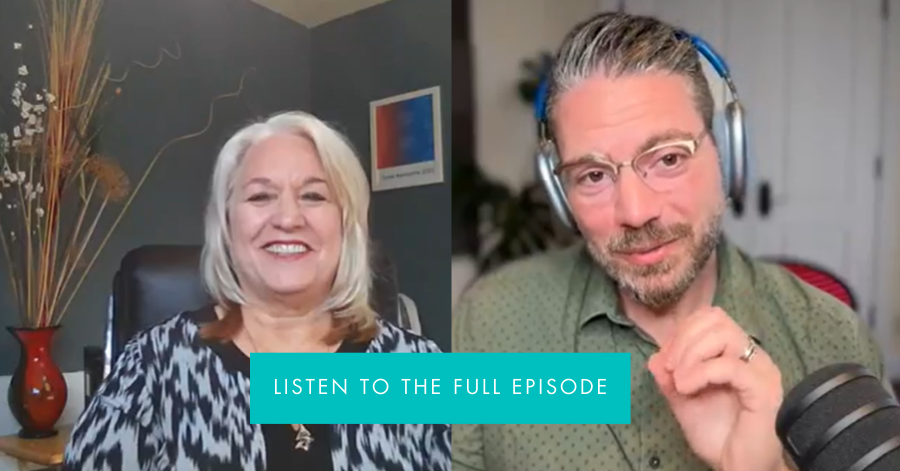
CCR Growth
How Niche Marketing Can Fill the Senior Living Gap
For years, senior living has used a generic approach to marketing, typically conveying the message that they are a one-stop solution for all retirees. But as the landscape and audiences change, senior living needs to zoom in from this broad, one-size-fits-all approach, zeroing in on today’s diverse group of seniors who have a wide range of needs and preferences.

In a recent episode of From Leads to Leases, Jerry Vinci interviewed Keely Raff, herself a seasoned senior care advocate, to talk about why niche marketing is a critical piece of the puzzle.
“[D]iving into specific markets can transform the way communities engage with prospective residents,” observed Jerry, adding that his discussion with Keely aims to unpack the nuances and strategies of tapping into niche markets within the senior living industry.
Keely paints the picture: an oversaturated senior living marketplace that has become highly competitive. “[A]s a [senior living] owner, operator or leader, people are having to ask, ‘How do I stand out?’”
From Health-Centric to Life-Centric
She outlines an important part of the niche approach to marketing which is to center your communications around lifestyle rather than just health.
“I call this a life-centric approach because it’s looking at the potential resident as a whole person rather than how we accidentally evolved in this field into wellness or lack of wellness.”
Traditionally, senior living has focused on receiving their residents via medical origins such as through recommendations and referrals from doctors, hospitals and so on. Keely challenges senior living operators to expand their approach to their target audience by asking questions around lifestyle: “[I]s this a person who went to the theater? Did they enjoy the theater? So then can we get involved? Can we partner with a theater versus a discharge planner? Or is this a person who likes to travel? Do we need to talk to a travel agent and partner with that travel agent?
“That’s the difference between life-centric and health-centric: a complete profile of the individual.”
By understanding the specific desires of different senior demographics, communities can tailor their offerings and messaging to resonate more deeply with potential residents. This not only attracts a better fit for their community, but also allows them to stand out from the competition in a crowded marketplace.

Goodbye Demographics, Hello Interests
“The Baby Boomers have changed everything in every decade, when they were 20, 30, 40, and they’re not gonna be any different at 70 and 80,” Keely points out.
“[T]hey are saying, ‘Don’t treat me as if I have a broken hip or I have a heart issue. Look at me for who I am.’”
She offers up a case study as an example of this approach, where she worked with a CCRC to attract like-minded people to buy units at this community, known as a teachers’ retirement community.
“We needed something more than just teachers. It was 330 units. And so we started looking at physicians. We started looking at teachers who had taught internationally. We started looking at professionals, but that had a common bond. We went to book signings in the local area and then we started sponsoring those so our name became associated with intellectuals rather than going to the hospital, right? And that’s how it got out and people were like, ‘Yes, that’s how I see myself’.”
Senior living owners and operators need to make this shift from talking to demographics (such as age, geographic area, income, etc) of their target audiences, to approaching them using interest-based messaging. Another important step is to ask yourself what persona or resident profile your community with its various offerings (ethos, services and amenities) resonates with.
Niche marketing allows communities to cater to these diverse needs. Imagine a community specifically designed for active adults who enjoy travel and cultural experiences. They might offer on-site classes on different world cultures, partner with local travel agencies for exclusive senior tours, and even feature guest speakers who are world travelers. This targeted approach speaks volumes to a specific demographic who crave intellectual and physical engagement in their retirement years.
A Spectrum of Options
The beauty of niche marketing lies in its vast possibilities. Here are a few examples to illustrate the potential:
- Intellectual Pursuits: Partner with local universities or libraries to host book clubs and lectures led by esteemed professors. Catered apartments could also include features like built-in bookshelves and reading nooks.
- Active Adults: Offer pickleball courts, fitness centers with specialized senior exercise programs, and on-site yoga classes. Partnering with local sports clubs or gyms could expand activity options.
- Singles Focus: Create fully equipped studio apartments with concierge services that include meal delivery options. This caters to independent seniors who may not want the responsibility of cooking.
- Memory Care: Develop specialized programs and staff training specifically tailored to those living with Alzheimer’s disease or dementia. This ensures a safe and supportive environment that meets the unique needs of this population.
Data Drives Decisions
Niche marketing isn’t just about intuition – it’s about data-driven decision making. Keely advises caution, advising that it’s best to conduct thorough market research to identify the demographics in your area and their specific needs. Look at local demographics, analyze competitor offerings, and even consider surveys from potential residents.
“You look at your data, you look at your openings, you look at how you address those openings, and then you identify that with data. And just like everything you do, you have to measure it. How did that work? What did I get? What’s my return on that? Was that worthwhile? Do I put more money into it or do I back out? Do I add to it?” says Keely.
By understanding the local senior population and their preferences, communities can refine their niche and tailor their marketing messages accordingly. This data-driven approach ensures resources are allocated effectively and marketing efforts resonate with the target audience.
“A lot of sales or marketing people really need to focus on that. Many times they’ll focus on things like conversion ratios. But you’ve got to peel it back a little bit further. So that’s why I’m saying it’s strategic. Look at where your opportunities are, and then think outside the box as to how you create something to fill that. And then you’re able to show the information. And it’s always evolving.”
Listen to the full episode
The Power of Storytelling and Authenticity

Facts and figures are important, but they don’t tell the whole story. Jerry highlights the importance of emotional connection, observing that in today’s digital age, potential residents are bombarded with marketing messages. So, messaging is one thing, but messaging that really resonates needs to be able to communicate on an emotional level.
This is where storytelling comes in. Senior living communities can use video testimonials from satisfied residents, showcase resident-organized events through social media posts, and even host virtual tours that capture the essence of their community. This allows potential residents to not only see the amenities, but also envision themselves thriving within that environment.
Go Beyond Traditional Marketing
The senior living industry needs to adapt its marketing tactics alongside its offerings. While print ads and brochures still have a place, senior living communities need to embrace digital marketing strategies. This includes targeted social media campaigns, SEO optimization for relevant keywords, and even exploring LinkedIn marketing to connect with potential referral sources such as financial advisors and elder care attorneys.
A multi-pronged approach that leverages both traditional and digital channels ensures maximum reach and engagement with the target audience.
Filling the Niche for Fulfilling Lives
By embracing niche marketing, senior living communities can move away from a generic approach and cater to the diverse needs and desires of today’s seniors. “Focusing on the human element and tailoring content to every audience reinforces the importance of building authentic connections with every community,” says Jerry.
This targeted strategy leads to a win-win situation: communities attract residents who are a perfect fit for their environment, while residents find a community that fosters their well-being and allows them to thrive in their golden years. As Keely puts it, “Niche marketing isn’t just about filling beds, it’s about filling lives.”
The senior living industry is on the cusp of an exciting transformation. By embracing niche marketing and a resident-centric approach, communities can create vibrant, fulfilling environments that cater to the diverse tapestry of today’s senior population. This not only ensures a brighter future for senior living, but also empowers older adults to live life to the fullest in their golden years.
The journey to enhancing your senior living marketing strategies shouldn’t stop here. At CCR Growth, we’re here to support, inspire and guide you through the ever-evolving landscape of senior living. Don’t hesitate to get in touch to see how we can assist you.
Subscribe to our newsletter
Sharpen your expertise and stay ahead of senior living industry trends—subscribe to CCR Growth’s newsletter for exclusive insights and updates.
Recent Posts


What is Nursing Home SEO: Benefits, Drawbacks, and Strategies

Build Your Brand from the Inside Out: A Senior Living Team Guide
Redefining Senior Living Marketing, Sales, and Operations
CONTACT ADDRESS
8710 Carmel Valley Road, Carmel, CA 93923
GENERAL INQUIRIES
info@ccrgrowth.com
(831) 273-3628
SOCIAL MEDIA





